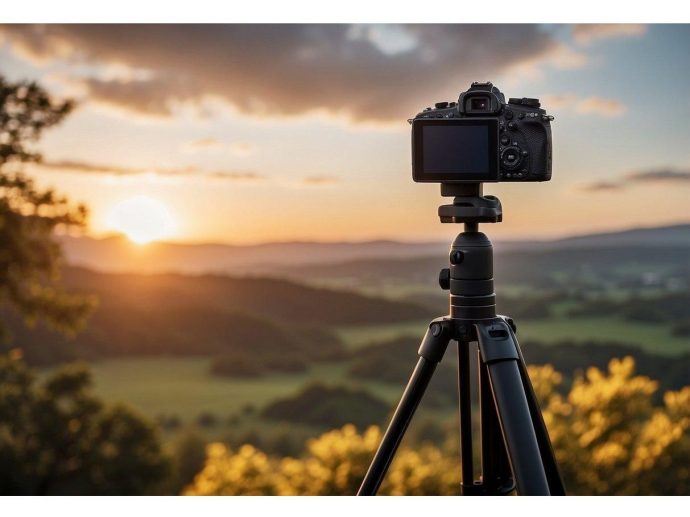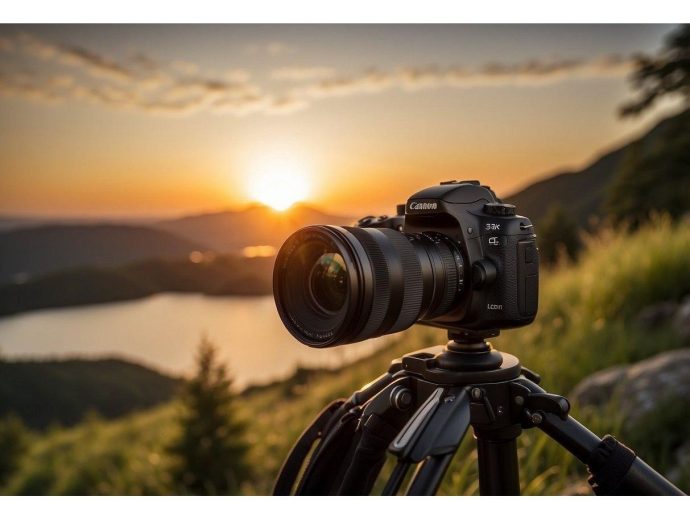Categories more
- Adventures (17)
- Arts / Collectables (15)
- Automotive (37)
- Aviation (11)
- Bath, Body, & Health (77)
- Children (6)
- Cigars / Spirits (32)
- Cuisine (16)
- Design/Architecture (22)
- Electronics (13)
- Entertainment (4)
- Event Planning (5)
- Fashion (46)
- Finance (9)
- Gifts / Misc (6)
- Home Decor (45)
- Jewelry (41)
- Pets (3)
- Philanthropy (1)
- Real Estate (16)
- Services (23)
- Sports / Golf (14)
- Vacation / Travel (60)
- Watches / Pens (15)
- Wines / Vines (24)
- Yachting / Boating (17)
Mastering Camera Fundamentals: Essential Skills for All Photographers
Published
07/07/2024Photography brings moments to life. Mastering camera fundamentals is essential for capturing these moments perfectly. Who Said Photography emphasizes that understanding how your camera works allows you to control your creative expression. This post will guide you through critical concepts that form the foundation for aspiring photographers.
One of the key aspects of photography is the exposure triangle, which includes aperture, shutter speed, and ISO. Each of these elements controls light and exposure differently. Grasping these controls helps you achieve the right balance for any lighting condition, ensuring your photos are well-exposed and visually appealing.
Beyond just the technical settings, composition plays a crucial role in photography. By thinking about how you frame your shots and the aesthetic choices you make, you can elevate a simple photo into something truly compelling. Together, we'll explore the essentials of your camera and the artistic choices that can enhance your photography skills.
Key Takeaways
- Learn the fundamentals of how your camera works.
- Master the exposure triangle to control light and exposure.
- Improve your composition to create more compelling photos.
Understanding Camera Types
When choosing a camera, it's important to consider the specific features and benefits of different types. Here, I will explain the characteristics of DSLR, mirrorless, and point-and-shoot cameras, as well as essential camera accessories.
DSLR Cameras
DSLR cameras are popular for their versatility and image quality. They have a mirror mechanism that lets you see the exact image you'll capture through an optical viewfinder.
These cameras offer excellent manual controls, interchangeable lenses, and better performance in low-light conditions. Common accessories for DSLRs include tripods, external flash units, and various lenses such as wide-angle, telephoto, or prime lenses.
In my experience, DSLRs are ideal for those who are serious about photography and need a reliable tool for various situations. They are, however, bulkier and heavier compared to other types.
Mirrorless Cameras
Mirrorless cameras, as the name suggests, don't have a mirror mechanism. Instead, they use an electronic viewfinder or the camera's LCD screen for composition. This makes them generally more compact and lighter than DSLRs.
Mirrorless cameras also offer high-quality images and the flexibility of interchangeable lenses. They are great for video too, often providing better autofocus performance during filming. Essential gear for mirrorless setups includes multiple lens options, extra batteries, and sometimes an external microphone for better audio.
I find mirrorless cameras to be a good choice for travelers and vloggers due to their portability and advanced autofocus systems.
Point-and-Shoot Cameras
Point-and-shoot cameras are known for their simplicity and compactness. They are perfect for casual photographers who want to capture moments without dealing with complicated settings.
These cameras typically have a fixed lens and automatic settings, making them easy to use. While they may not offer the same level of control or image quality as DSLRs or mirrorless cameras, modern point-and-shoot cameras still provide respectable performance for everyday photography.
Their small size means they can easily fit into a pocket or small bag, making them convenient for spontaneous photography. I recommend them for beginners or anyone needing a travel-friendly option.
Camera Accessories
Regardless of the type of camera you choose, having the right accessories can enhance your photography experience. Basic accessories include memory cards, carrying cases, and cleaning kits. For more advanced setups, consider investing in filters, external flashes, and tripods to expand your creative possibilities.
Some accessories, like lens hoods and remote shutters, can help in achieving better shots in challenging conditions. Reliable camera straps are also essential for comfort and safety during travel or long photoshoots.
Each type of camera benefits from specific accessories, so it’s helpful to research and invest in gear that fits your photography style and needs. Using the right accessories can greatly improve the quality and ease of your photographic endeavours.
Essential Camera Functions
Mastering essential camera functions is key to capturing stunning photos. I'll take a look at aperture, shutter speed, ISO, exposure control, and focus techniques, which are foundational to great photography.
Aperture and Depth of Field
Aperture, marked as f-stop, controls the size of the lens opening. A lower f-stop value, like f/2.8, means a larger opening and allows more light into the camera. This setting creates a shallow depth of field, making the subject sharp while blurring the background, perfect for portraits. Higher f-stop values, like f/11, create a narrower opening, reducing light entry and increasing depth of field, which is ideal for landscapes. To adjust aperture, find the Aperture Priority mode (A or Av) on your camera.
Shutter Speed and Motion
Shutter speed refers to how long the camera's sensor is exposed to light. A fast shutter speed, such as 1/1000s, freezes motion, useful for sports or wildlife photography. On the other hand, a slow shutter speed, like 1/30s, can create motion blur, highlighting movement in the scene, great for capturing flowing water or light trails. To experiment with shutter speed, switch to Shutter Priority mode (S or Tv).
ISO and Noise
ISO measures the camera sensor's sensitivity to light. Lower ISO values, like ISO 100, produce clear, noise-free images in bright conditions. Higher ISO values, such as ISO 3200, are used in low light but can introduce grain or noise into the image. Balancing ISO, especially in low-light situations, is critical for maintaining image quality without excessive noise.
Exposure Control
Exposure control involves balancing aperture, shutter speed, and ISO, known as the exposure triangle. When one setting changes, the others must adjust to achieve proper exposure. Exposure compensation can help fine-tune exposure, making photos brighter or darker by shifting exposure settings. Use the +/- button on your camera to adjust it. Metering modes (spot, centre-weighted, evaluative) measure light differently and affect how the camera sets exposure.
Focus Techniques
Focusing ensures the subject is sharp. Single-point autofocus allows pinpoint accuracy for still subjects, while continuous autofocus (AI-Servo or AF-C) tracks moving objects. Manual focus gives complete control, useful in tricky lighting or precision work. For the best results, choose focus modes that match your subject's movement and select the right AF points to ensure the subject stays focused.
Composition and Aesthetics
To create captivating photographs, mastering composition and aesthetics is crucial. This involves understanding how to use lighting, balance elements within the frame, and make effective use of colour.
The Role of Lighting
Lighting is an essential aspect of composition. Natural light provides a soft, warm glow, particularly during golden hour, which is the period shortly after sunrise or before sunset. This can enhance the subject's features and create a pleasing effect.
Artificial light, on the other hand, offers more control. With tools like softboxes and reflectors, I can manipulate shadows and highlights to add depth. Understanding colour temperature is also key. Warmer lights bring out rich, warm tones while cooler lights enhance blues and greens.
Framing your subject with light can direct the viewer's focus. For example, backlighting can create dramatic silhouettes, and side lighting can add texture and depth. Proper use of lighting can transform a simple photo into a stunning one.
Balancing the Composition
Balancing the elements in a photograph ensures that it is visually appealing. The rule of thirds is a fundamental technique where I divide the frame into a 3×3 grid and place the key elements along these lines. This helps create a balanced and engaging image.
I also consider leading lines, which guide the viewer’s eye towards the focal point. These lines can be roads, rivers, or even shadows. Using symmetrical and asymmetrical balance is another technique. Symmetry provides a sense of order, while asymmetry can make a photo more dynamic.
The background must not distract from the subject. A simple, uncluttered background ensures the subject stands out. By balancing light, lines, and spaces, I can create a harmonious composition that captivates the viewer.
Using Colour Effectively
Colour can profoundly impact the mood and emotion of a photograph. Complementary colours, like blue and orange, can make images pop. Using analogous colours, which are next to each other on the colour wheel, can create a more harmonious and calming effect.
Colour temperature also plays a crucial role. Warmer tones often evoke feelings of comfort and warmth, while cooler tones can create a more tranquil or somber mood. By adjusting white balance, I can control these tones to suit the desired aesthetic.
In addition, the intensity and saturation of colours can draw the viewer's attention to specific areas. Bright, saturated colours can highlight important elements, while muted tones can serve as a backdrop. Understanding how to manipulate colour helps in creating compelling and visually pleasing photographs.
















